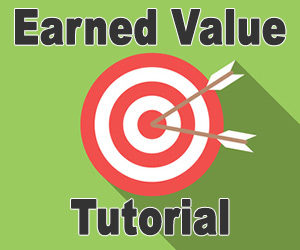Earned Value Management is the secret to project success! If you are passionate about having projects finish on time, on schedule, and with all other project success criteria satisfied, you have no choice but to learn how to use it.
It’s amazing how many project managers do not know the true status of their projects until near the end, when there is little that can be done to ensure they finish on time or budget. The proper time to rigorously track project status is at the beginning, not at the end, because this is when interventions by the project manager can most easily bring it back on track.
In addition, it is well understood that projects which get behind schedule or over budget early in their life cycle will continue along that path throughout their existence. Even the most talented project managers have a great deal of difficulty delivering a successful project when a culture of spending and/or late deliverables has been established early on. In short, early warning of project variances is the silver bullet that could solve most project issues.
Earned value management gives the project manager that all-important early warning signal. It is a real time snapshot of the project status from two points of view:
- Budget
- Schedule
It also gives you forecasts at project completion assuming that future project performance is the same as past performance.
The earned value calculation can take place at any time, but generally it is performed at weekly intervals, or at some other predefined project status points. However, before these regular earned value calculations can be made there are a few things that need to be planned into the project.
Project Planning
At the outset of the project, the project manager must do four things:
- Divide the project into tasks.
All of the project scheduling and control tasks are built on the foundation of project tasks. Most earned value metrics are calculated for each task and summed to determine the overall project status. - Assign each task a start and end date.
Project scheduling is a discipline unto itself, but for small projects the start and end dates can be chosen based on experience or actual past project data. This baseline project schedule is used to compare against the actual project status calculated at regular intervals with the earned value method. - Assign each task a budget.
Just like with the schedule, a budget for each task is necessary for the definition of the project. This will be used to compare against the actual project budget values at regular intervals. - Choose a project status period.
The earned value calculations need to be performed at regularly defined intervals to be useful. A weekly status period works great for almost every project, big or small, but whatever status period you choose, pick it wisely and stick to it.
Here is what an example task might look like after project planning:
| ID | Name | Start | End | Budget |
|---|---|---|---|---|
| 100 | Set up Database | Mar. 1 | Mar. 10 | $10,000 |
The Earned Value Calculation
Let’s do a quick overview of the earned value calculation. At each chosen project status point there is a 5 step process to follow.
- Gather Work Performance Information
The first step is to gather project information. Four variables are collected from the actual project data. These are the Budget at Completion (BAC), Planned Value (PV), Earned Value (EV), and Actual Cost (AC). These are the inputs. They represent the project data from which to calculate the project status and/or forecast. - Determine Schedule Status
The earned value method tells you how far ahead or behind schedule the project is right now, up to the minute, in numerical terms. It does this via a calculation called the Schedule Variance (SV), which represents the monetary value equivalent that each task is ahead or behind schedule. Thus, it can be easily compared to the budget for the task. The Schedule Performance Index (SPI) tells you how far ahead or behind schedule the task (or project) is in relative terms, as a percentage of the whole. It represents the efficiency of the project withi respect to time. - Determine Cost Status
The earned value method also tells you how far over or under budget the project is right up to the minute as well. It does this via a calculation called the Cost Variance (CV), which represents the monetary value that each task is over or under budget. The Cost Performance Index (CPI) tells you how far over or under budget the task (or project) is in relative terms, as a percentage of the whole. It represents the efficiency of the project’s resources. - Forecasting
Once you’ve determined the status of the project from a cost and schedule perspective, it’s time to determine what the final project outcome will be if everything went according to the current pace. The Estimate To Complete (ETC) is the amount of money needed to finish the project, from now until the end. The Estimate At Completion (EAC) is the total project (final) estimate. The Variance At Completion (VAC) is the estimated final cost overrun or underrun, and the To Complete Performance Index (TCPI) is the efficiency level required to complete the project on budget. - Reporting
There isn’t an appropriate one-size-fits-all way to report earned value results. Some metrics are more important in certain industries or to a certain audience, for example corporate executives vs. project investors. Even in the same industry large projects and small projects have vastly different reporting needs. Thus, on the reporting page we will give you some ideas about how to report earned value results for your projects.
Are you getting excited yet? Move to the next tutorial page to get started with step 1, the gathering of work performance information.
Navigation
- Next Page: Gather Work Performance Information
- Home: Earned Value Tutorial

